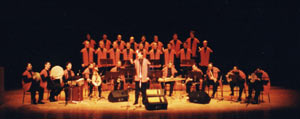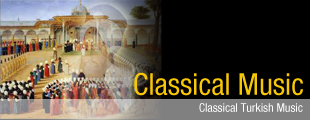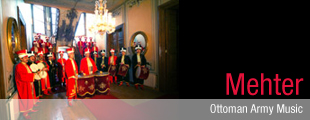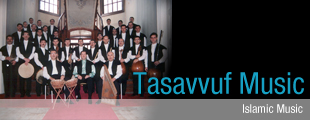

 Sufism (Tasawwuf) opens the heart for spiritual ardour, which elevates sensuality to blissful perception of the Divine and establishes harmony between the two. It is not a concept or thought but a living experience, a life-style, as it were. With this life-style, progress is attained on the path leading to union with God. In regard to the life of the Sufis, the most visible feature is the devotion to art: Fine arts, which are a manifestation of one of the 99 names or attributes of Allah, AI-Mubdi, the Originator and Maker of all things, are practiced by the people of Sufism in all the Sufi Orders. For example, the choreography of the Mevlevi ceremony reached its present consummate form through centuries of development in the laboratories of fine arts of the people of Sufism. It is the same in all the arts, from calligraphy to architecture, from music to mother-of-pearl inlay, from pottery to dance.
Sufism (Tasawwuf) opens the heart for spiritual ardour, which elevates sensuality to blissful perception of the Divine and establishes harmony between the two. It is not a concept or thought but a living experience, a life-style, as it were. With this life-style, progress is attained on the path leading to union with God. In regard to the life of the Sufis, the most visible feature is the devotion to art: Fine arts, which are a manifestation of one of the 99 names or attributes of Allah, AI-Mubdi, the Originator and Maker of all things, are practiced by the people of Sufism in all the Sufi Orders. For example, the choreography of the Mevlevi ceremony reached its present consummate form through centuries of development in the laboratories of fine arts of the people of Sufism. It is the same in all the arts, from calligraphy to architecture, from music to mother-of-pearl inlay, from pottery to dance.
However, art is not the aim of Sufism. In the ceremonies and worship carried out by the Sufis, which are called the Rituals of the Saints, dance in its widest sense plays an important role, as do music and literature in their most exalted form. However, these arts are not the goal; they are a means to draw the human being to Allah, for the sake of Allah, bait on the path of Allah, attracting the human being to Allah. With music, with dance, even with dress styles a person’s ears and eyes are addressed in this way, awakening the aesthetic feelings present in human nature and elevating pleasure from sensuality to divine bliss. That is the purpose of art in Sufism because the single and only aim of Sufism is Allah.
Music, which is one of the fine arts, is used extensively in Sufism. This is because, when the souls were created and they all stood in the presence of their Creator, He addressed them with “alestu bi Rabbikum?” (Am I not your Lord ?) The souls replied: “Qalu, bela,!” (They said:Yes!) (Quran Surah raaf, S.7, V. 172) On hearing that Divine Address they went into ecstasy. They heard the divine music of the Lord, which must be heard and felt, and can not be perceived, or felt or understood on human terms. In the beginning there was music and at the end there will be music: The Trumpet Blast of the Archangel Israfil on the Day of Resurrection. Allah could say to the corpses, IRise up and join ranks at the Place of Assembly? But it is with music that the Resurrection shall be announced, with sound coming from the trumpet of Israfil!
These are but a few signs which only the wise comprehend. One of those who truly understood these signs was the venerable Mevlana: He began his book the Mesnevi with “bishnev in ney” (Listen to the reed flute) thus expressing the importance of hearing and listening to music. One aspect of religion is obligation, the other is affection. The religious scholars teach us how to fulfill our obligations. The people of Sufism show us the way to express our affection, even ecstatic love. It is obvious to everyone how powerful means music is to express love.
These are some of the reasons that the people of Sufism, the lovers of God, sang about their condition together.



